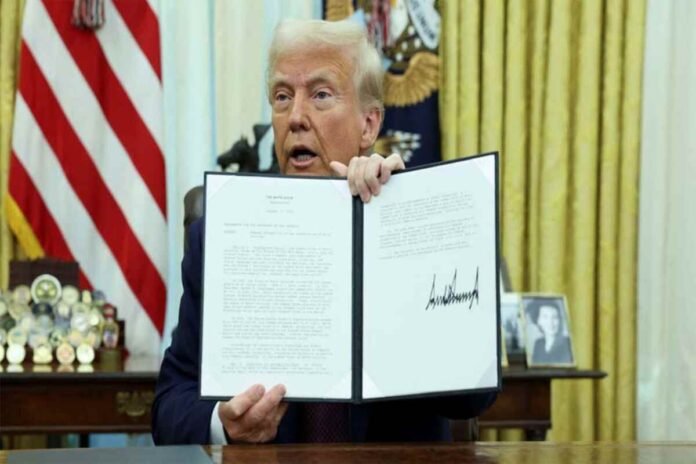In a landmark decision, US President Donald Trump has signed an executive order banning the creation and issuance of Central Bank Digital Currencies (CBDCs) in the United States. During his presidential campaign, Trump had repeatedly promised that banning CBDCs would be a key priority upon taking office. This move marks the first significant step by Trump toward addressing Bitcoin and cryptocurrency policies in his second term.
The order defines CBDCs as “a form of digital money or monetary value, represented in a national accounting unit, that is a direct liability of the central bank.” It explicitly prohibits US agencies from developing, issuing, or promoting CBDCs within the United States or abroad unless explicitly required by law. All ongoing CBDC-related initiatives must be terminated immediately, according to the directive.
Reasons for the Ban
The executive order highlights privacy, sovereignty, and financial stability concerns as primary reasons for opposing CBDCs. Trump’s administration instead advocates for a private-sector-led digital asset ecosystem, placing emphasis on dollar-backed stablecoins as a viable alternative to centralized digital currencies.
To guide the transition, a presidential working group has been established to develop a federal regulatory framework for digital assets, including stablecoins. This group will address key areas such as market structure, oversight, consumer protection, and risk management. Additionally, the order proposes the possibility of creating a national asset reserve derived from cryptocurrencies confiscated by law enforcement—potentially focusing on Bitcoin, which aligns with Trump’s earlier campaign promises.
US Bitcoin Reserve and Other Measures
The US currently holds approximately 198,109 Bitcoins, valued at $20.1 billion. Trump has also granted a full and unconditional pardon to Ross Ulbricht, the founder of Silk Road, fulfilling another campaign promise aimed at the crypto community. These actions align with Trump’s broader agenda to create a strategic Bitcoin reserve, ban CBDCs, and establish a regulatory framework for digital assets.
What Are CBDCs and Why Are They Controversial?
CBDCs are digital currencies issued by a country’s central bank, pegged to its fiat currency. Unlike decentralized cryptocurrencies, CBDCs are controlled by a central authority, raising concerns about government overreach, surveillance, and reduced financial privacy. Over the past few years, numerous countries—including China, Brazil, South Korea, and the UAE—have pursued CBDC projects, with the Bahamas, Nigeria, and Sweden already launching their versions.
President Trump has signed an executive order banning Central Bank Digital Currency (CBDC)
This was going to be abused by big banks as a social credit score where they could freeze your money for wrong think
Huge day for freedom pic.twitter.com/QSyLZec5u7
— DC_Draino (@DC_Draino) January 23, 2025
Trump’s opposition to CBDCs underscores a preference for decentralized, private-sector solutions. The order halts any progress toward a US CBDC and shifts focus to supporting the development of dollar-backed stablecoins. This strategy seeks to maintain the dollar’s dominance in the global economy while promoting innovation in private-sector digital assets.
Global Implications and Future of Crypto
This move places the US in direct contrast with countries actively adopting CBDCs, potentially creating a competitive landscape in the digital currency space. By championing private-sector solutions, the US aims to preserve its global economic influence without relying on government-controlled digital currencies.
The executive order also signals growing legitimacy for Bitcoin and cryptocurrencies, potentially driving greater adoption. However, challenges remain, particularly in balancing government regulation with the principles of decentralization and sustainability. Maintaining openness and independence in the crypto ecosystem while ensuring robust oversight will be critical for its long-term success.
Trump’s decisive action reflects his administration’s commitment to fulfilling campaign promises and shaping the future of digital assets. By rejecting CBDCs and prioritizing private-sector innovation, the US takes a bold stance that could redefine its role in the evolving global digital economy.



